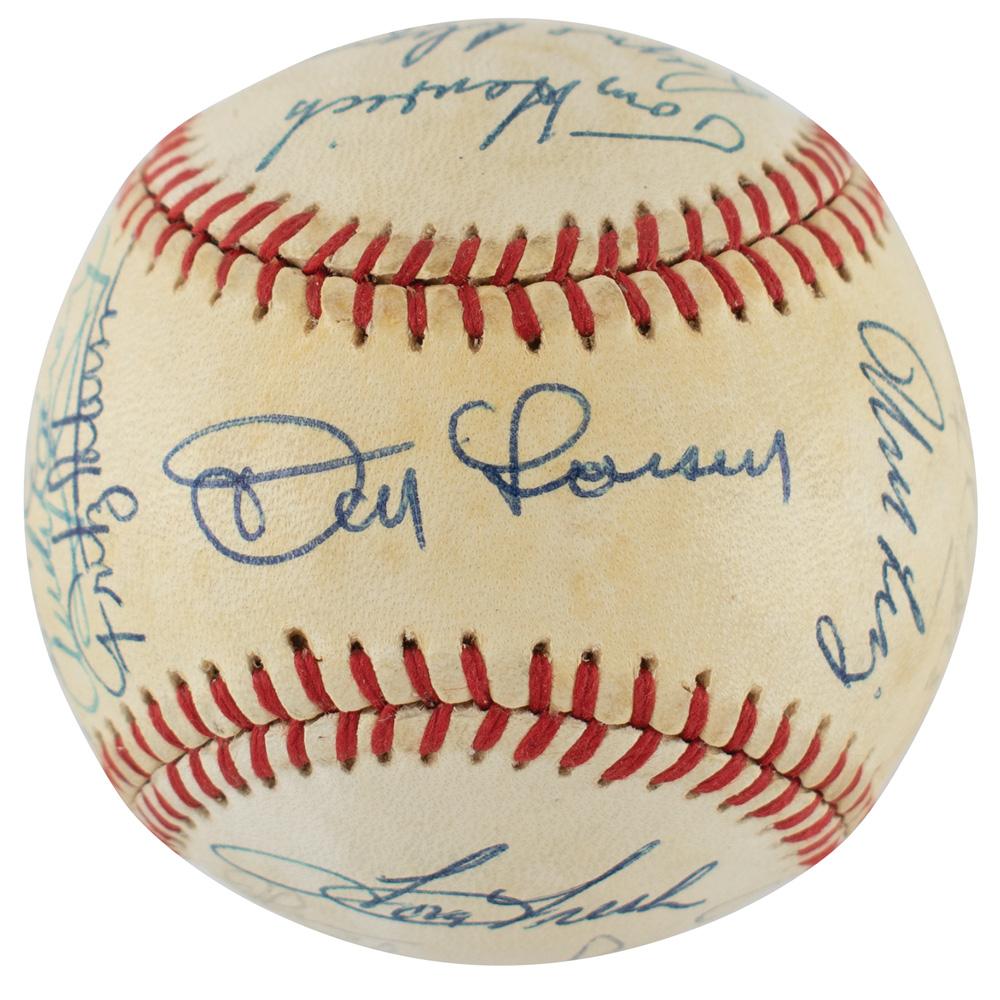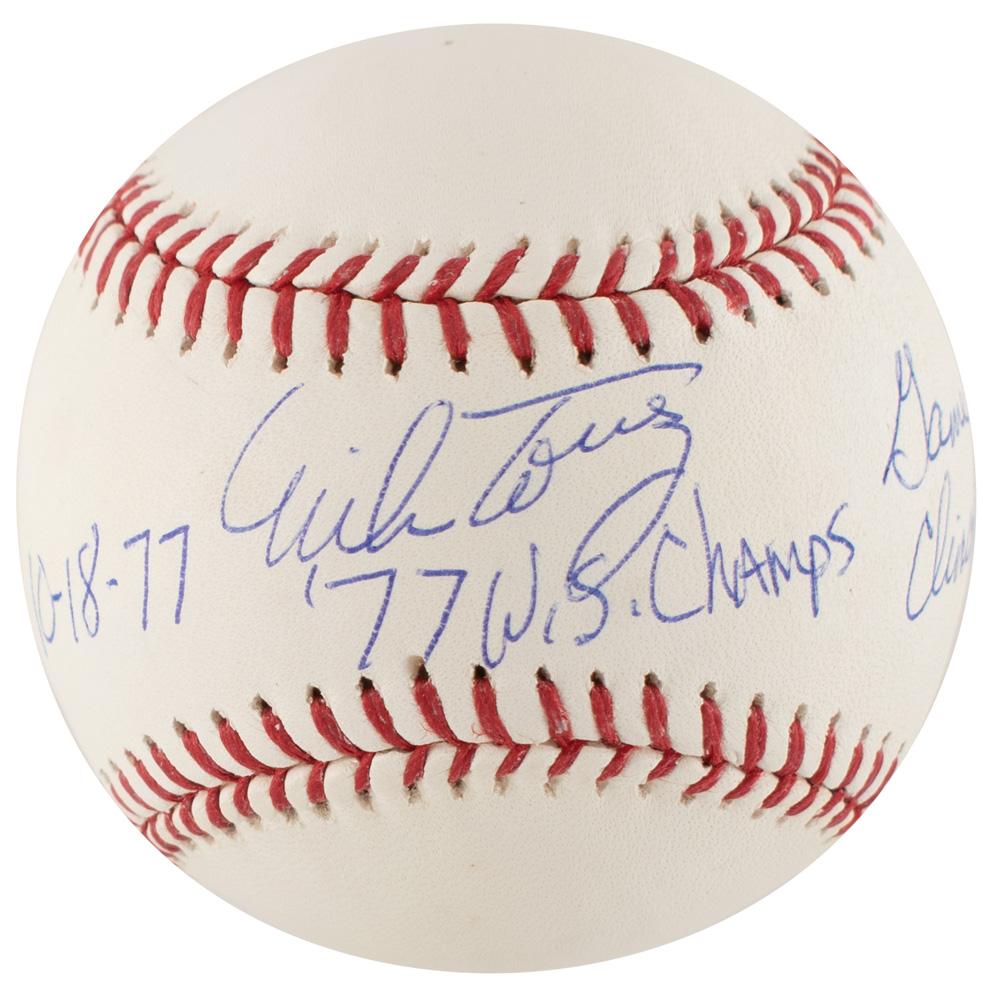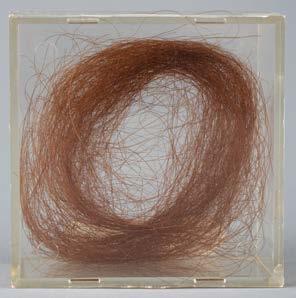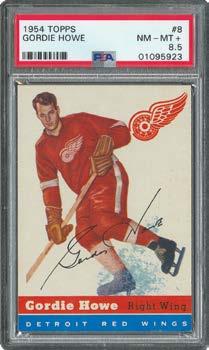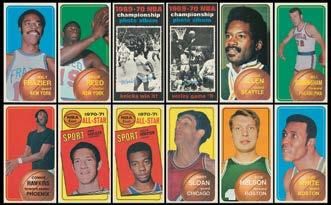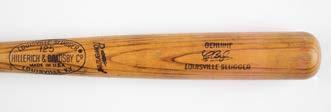
11 minute read
Olympics
Medal. Participation medal issued for the St. Moritz 1928 Winter Olympics. Bronze, 37 mm, 22 gm, by Milo Martin. The front depicts the goddess Victory holding a laurel branch in a horse-drawn sled, with mountains rising in the background and the Olympic rings below; the reverse bears raised text, “II Jeux Olympiques D’hiver St. Moritz 1928,” over a laurel branch. Starting Bid $200
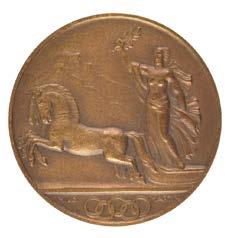
First-place gold medal from the Los Angeles 1932 Summer Games
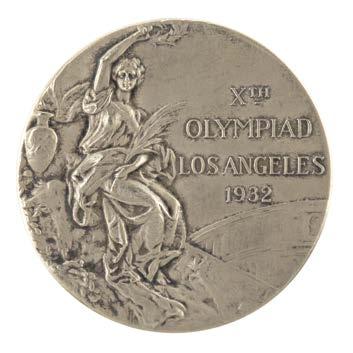
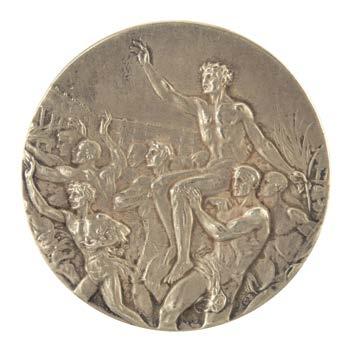
9209. Los Angeles 1932 Summer Olympics Gold Winner’s Medal. Winner’s medal issued for the Los Angeles
1932 Summer Olympics. Gilt silver, 55 mm, 97 gm, designed by Giuseppe Cassioli, minted by Whitehead & Hoag. The front, inscribed, “Xth Olympiad, Los Angeles, 1932,” features a ‘Seated Victory’ with the Coliseum in the background; the reverse portrays a winner carried by jubilant athletes. A wonderful example of this classic design, and the only first-place 1932 LA prize we have ever offered. Starting Bid $1000

9210. Rome 1960 Summer Olympics Torch.
Official Rome 1960 Summer Olympics torch, constructed of bronzed aluminum, measuring 15.5˝ in length and 3.75˝ at its widest point, manufactured by the Curtisa firm of Bologna. The torch’s designer, Amedeo Maiuri, was a renowned Italian archaeologist famous for his studies of the Roman site of Pompeii. Inspired by the designs and patterns of the host city’s ancient ruins and monuments, the torch is grooved with slender conical fluting along its candlestick frame, features consistent with the classical touch of the 1960 Games. The torch platform bears the engraving, “Giochi della XVII Olympiade,” and maker’s marks, “M. F.—Curtisa—Bologna, 3375,” can be found inscribed on the bottom of the handle. Also included with the torch is its rare original cylindrical presentation case, which features wear and some scuffing, and denting to upper and lower covers. The Olympic flame was lit on August 12 in Olympia, Greece, and was carried a total of 1,863 km—excluding the flame’s voyage from Athens to Syracuse aboard the training ship Amerigo Vespucci—by over 1,500 torchbearers during its historic fourteen day relay. The XVII Olympiad earns the distinction of being the first Summer Olympics to be telecast in North America. Starting Bid $500
pation Medal. Participation medal issued for the 1956 Cortina Winter Olympics. Bronze, 45 mm, 48 gm, by Constantino Affer. The front features the head of Victory crowned with Olympic rings and encircled with raised text, “VII Giochi Olimpici Invernali”; the reverse depicts a snowflake over Mt. Pomagagnon, with raised text, “Citius, Altius, Fortius, Cortina 1956.” Starting Bid $200
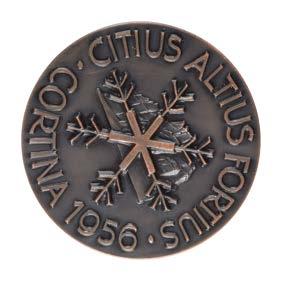
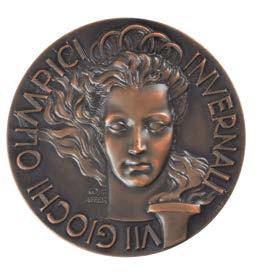
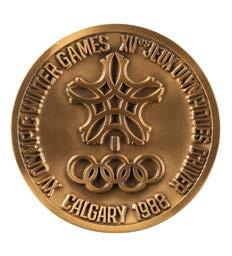

medal issued for the Calgary 1988 Winter Olympics. Bronze, 64 mm, 133 gm, by Cornelius Martens. The front depicts the Calgary Games emblem and raised French and English text, “Calgary 1988, XV Olympic Winter Games”; the reverse bears a panoramic view of Calgary, the Saddledome Stadium, and the Canadian Rocky Mountains, with the Olympic motto below. Includes its original velvet case. Starting Bid $200
Participation medal issued for the 1996 Atlanta Summer Olympics. Bronze, 60 mm, 60 gm, by Malcolm Grear Designers. The front features the Atlanta Games emblem under raised text, “Games of the XXVI Olympiad”; the reverse bears a quilt of leaves and the raised text, “Centennial Olympic Games.” Complete with its green box and pouch. Starting Bid $150


pation medal issued for the Nagano 1998 Winter Olympics. Bronze, 60 mm, 137 gm. The front features a forest of small trees on a mountain side with a curve denoting a ski slope; the reverse bears the Nagano Games logo and a wreath effect along the rim. Complete with its white paper presentation box, which is slightly creased. Starting Bid $200

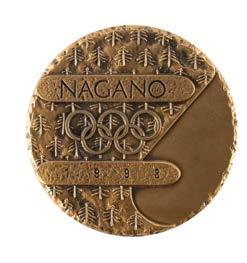
9215. Athens 2004 Summer Olympics Torch Signed Torch. Official 2004 Athens
Summer Olympics torch, constructed of aluminum and olive wood, measuring 25.75˝ in length and 2.25˝ at its widest point, designed by Andreas Varotsos and manufactured by GA & L Harrington. The torch was modeled to reflect the simple and congruous lines of an olive tree leaf, with the union of wood and metal evoking the different colors found on either side of the leaf, and the ergonomic design representing the extension of the moving flame. The front of the aluminum sheath bears the Olympic rings and Athens emblem, with Greek engraving below presented to Lena Zachopoulou. Small dent to upper tip of torch. The Olympic flame was lit in Olympia, Greece, on March 25, 2004, and proceeded on a five continent journey that witnessed the torch pass by all the cities that had hosted the Games since 1896, as well as marking the flame’s debut in Africa, India, and South America. In total, the torch covered over 84,000 km during its 141-day journey. Starting Bid $200
9216. Torino 2006 Winter Olympics Torch. Official
2006 Torino Winter Olympics torch, constructed of blue technopolymer-coated aluminum, measuring 31.252˝ in length and 4.52˝ at its widest point. Designed by Pininfarina, the shape of the torch was designed to appear like a ski tip, while also representing the monument and symbol of Turin, the Mole Antonelliana. Additionally, the design was intended to replicate the traditional wooden torch, giving the impression that the metal itself catches fire and burns. The middle portion of the torch bears an inscription of the Torino Games emblem with Olympic rings. Slight instances of scuffing to the body and the upper portion of torch bears evidence of use. Base of handle affixed with “074” label. Starting on December 8, 2005, the Olympic torch relay lasted 75 days and traversed over 11,300 km. In all, a total of 10,001 torchbearers carried the flame until it entered the Olympic Stadium on February 10, 2006. This sleek and dynamic Olympic torch was awarded the Lorenzo il Magnifico award, the highest prize from the Florence Biennale of Contemporary Art. Starting Bid $200 9217. Vancouver 2010 Winter Olympics Torch. Of-
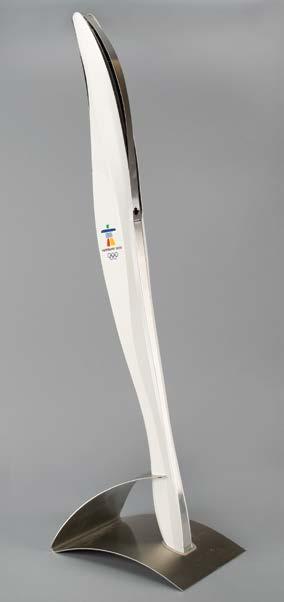

ficial 2010 Vancouver Winter Olympics torch, constructed of stainless steel, aluminum, and sheet molding, measuring 37˝ in length and 3˝ at its widest point. Manufactured by Bombardier, the shape and contours of the torch represent the lines made by snow and ice sports, and is engraved with the motto “With Glowing Hearts / Des plus brilliants exploits,” with the Canadian maple leaf ‘cut-out’ on the opposing side. The two white panels bear the Vancouver Games logo, with lower section featuring scuffing and upper portion also bearing small dings and a scratch; the paneling is slightly dented. Includes the uncommon original stainless steel display stand. Starting Bid $200
9218. London 2012 Summer Olympics Torch Stunning
official 2012 London Olympics torch, comprised of metal and aluminum, measuring 31.5˝ in length and 4.25˝ at its widest point, designed by Edward Barber and Jay Osgerby, and manufactured in collaboration by Tecosim, LPG Gas, Bullfinch and Premier Sheet Metal. The gold-colored torch body consists of two envelopes of aluminum alloy perforated with 8,000 circles, a number which matches with both the amount of torchbearers and the United Kingdom relay miles, and features a golden metal logo of the Games near the top. The triangular shape refers to the multiples of three found in the Olympic movement’s values of excellence, friendship, and respect, the Olympic motto of ‘Citius, Altius, Fortius,’ and London’s hosting of the Games for the third time. The Olympic flame was lit in Olympia on May 10, 2012, and embarked on an eight-day journey across Greece and Crete before flying over to London. Commencing in Land’s End in Cornwall on May 19, the UK portion of the relay was designed so that 95 percent of the population of the United Kingdom, the Isle of Man, Jersey and Guernsey would be a maximum of one hour from the torch route. After seventy days and 15,775 total km, the massive relay touched down in London’s Olympic Stadium on July 27. A truly regal and highly sought-after example of an Olympic torch, and a work of art that earned the Design of the Year Award at London’s Design Museum. Starting Bid $300
9219. Sochi 2014 Winter Olympics Torch.
Official 2014 Sochi Winter Olympics torch, constructed of aluminum and various polymers, measuring 37.5˝ in length and 5.75˝ at its widest point, developed by a team of designers led by Vladimir Pirozhkov and Andrei Vodyanik. The torch was modeled after the feather of a Firebird or phoenix, which symbolizes good luck or fortune in Russian folklore, and was immortalized in Igor Stravinsky’s eponymous ballet. The torch’s silver color represents winter ice, and the red, the traditional color of Russian sport, denotes the fires kindling in the mountains around the resort. The upper portion bears the Sochi Games logo, with one label near the handle reading “111.” The cover, which features some scuffing, was previously detached to remove the torch’s propane; as a result, the lower seal was cut, the interior adhesive broken, and the cover no longer connects tightly to body. Complete with its original torch relay carrying bag. Accompanied by a custom-made display stand. Starting Bid $200
9220. Pyeongchang 2018 Winter Olympics Torch.
Official 2018 PyeongChang Winter Olympics torch, constructed of a white metal exterior shell with gold-colored metal interior, measuring 27.5” in length and 3.25” at its widest point, designed and manufactured by Young-se Kim, Inno Design / Groupe Hanhwa. At the top, the exterior shell is divided into five vertical branches to form a pentagonal shape, representing the sporting passion and spirit that unites the five Olympic continents (Africa, Europe, the Americas, Asia, and Australia). A colorful raised PyeongChang 2018 emblem decorates the body of the torch, and the handle is printed with golden stars. The white and gold colors used in the design represent the snow and ice of the Winter Games, as well as the Olympic flame, and correspond with the color scheme of the PyeongChang relay. The 700 millimeter length of the torch represents the altitude of PyeongChang, which lies 700 meters above sea level. The torch is specially designed so that the flame can burn continuously despite inclement weather: it generates an air tunnel that sends more oxygen to the flame, and a pentagonal hole at the bottom of the torch allows water to drain. Complete with its drawstring bag and carrying tube. Starting Bid $200
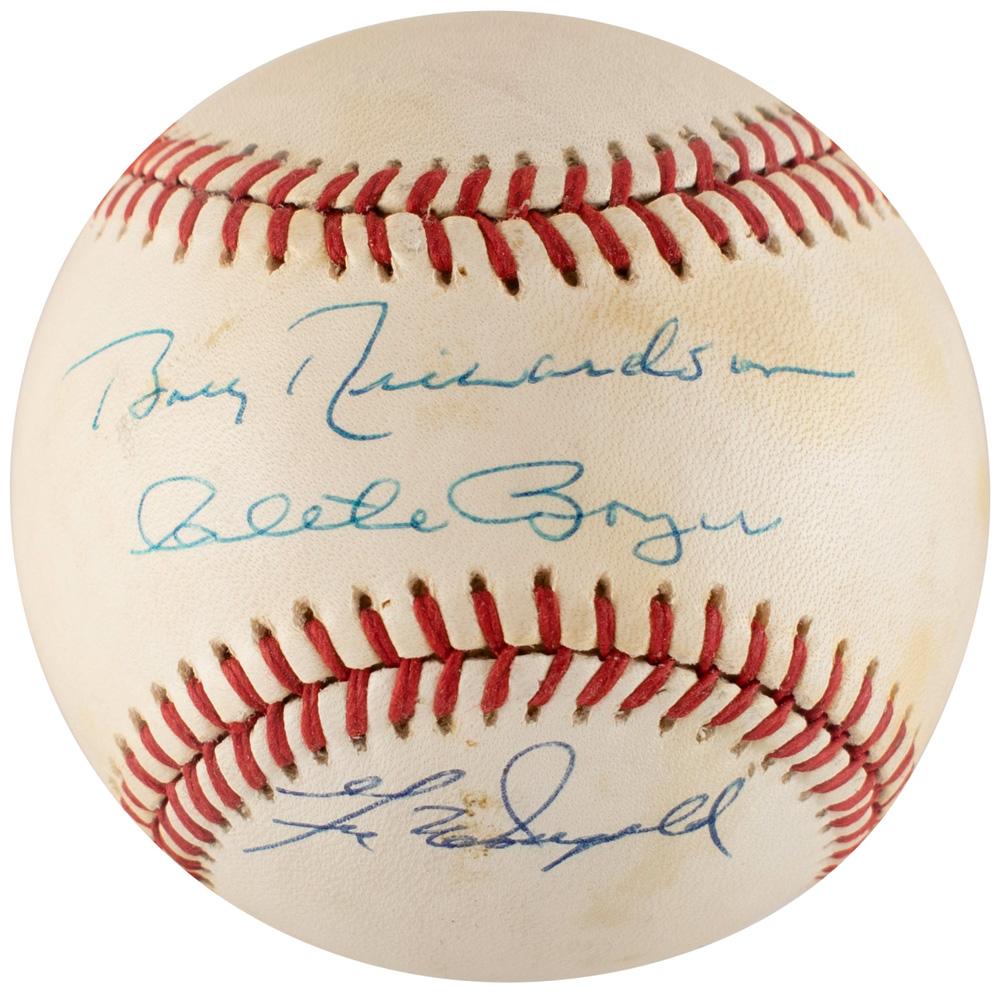
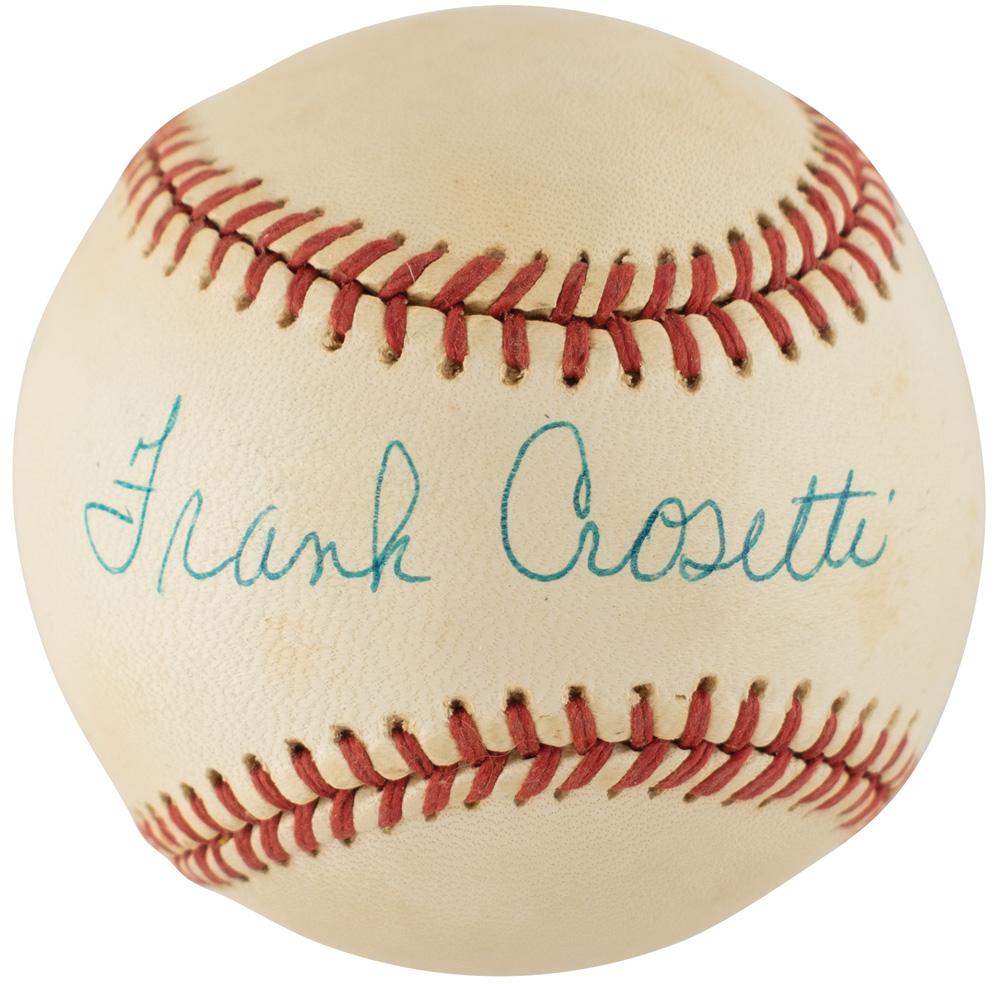
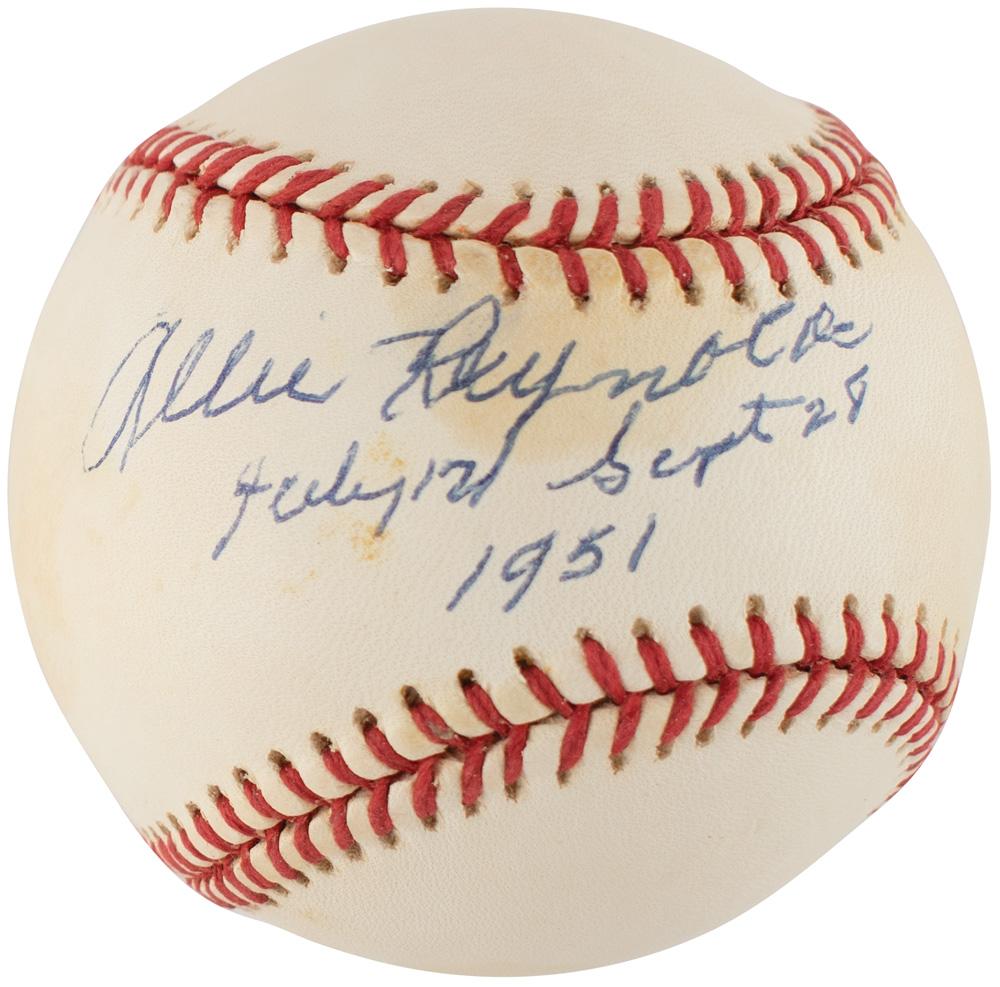
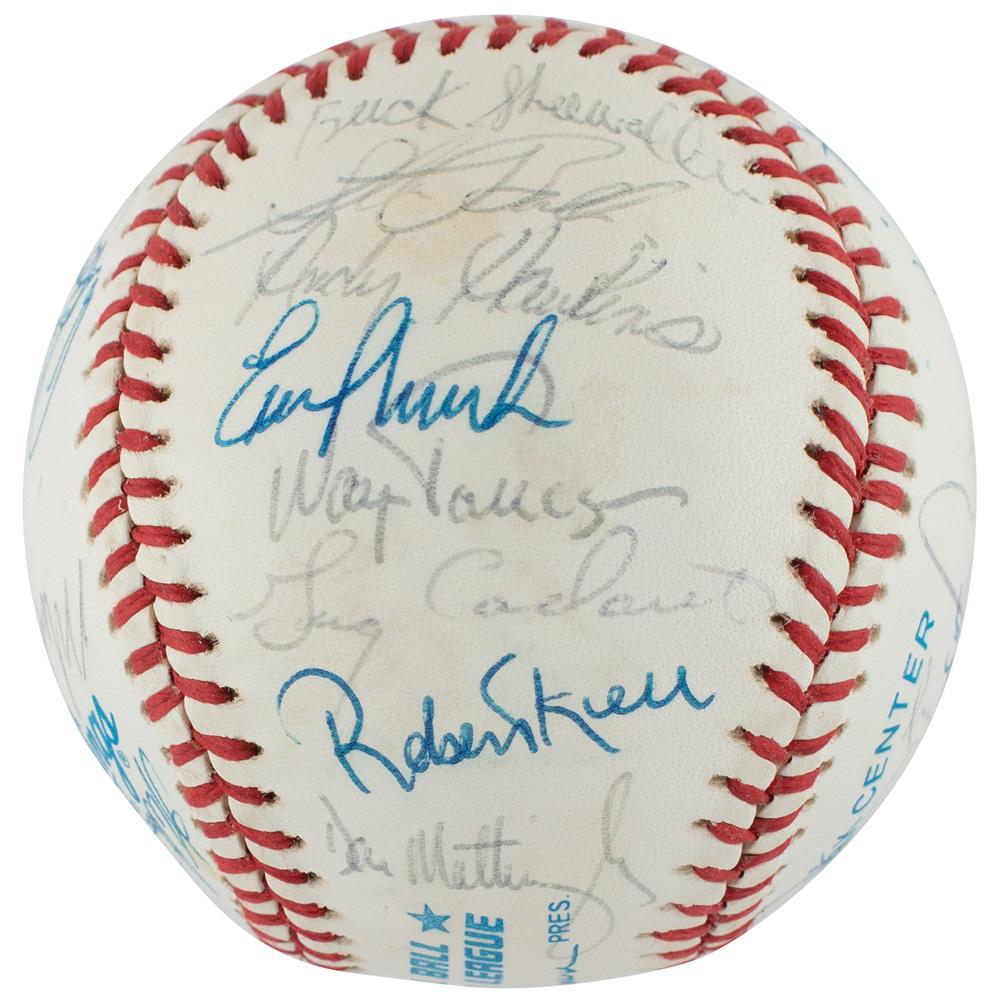
9282. NY Yankees: 1991 Team-Signed Baseball
Starting Bid $100
9271. NY Yankees Hitters: Mattingly, Raines, and Winfield (3) Signed Baseballs
Starting Bid $200
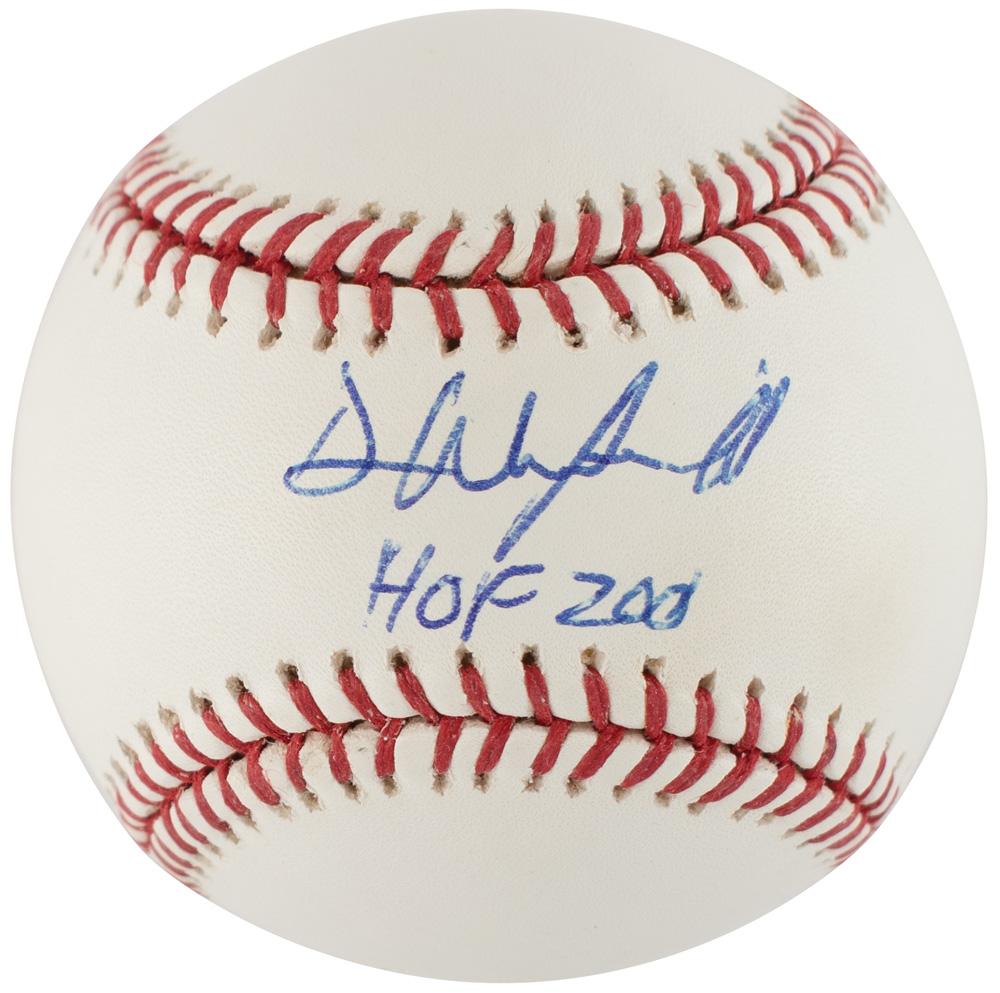
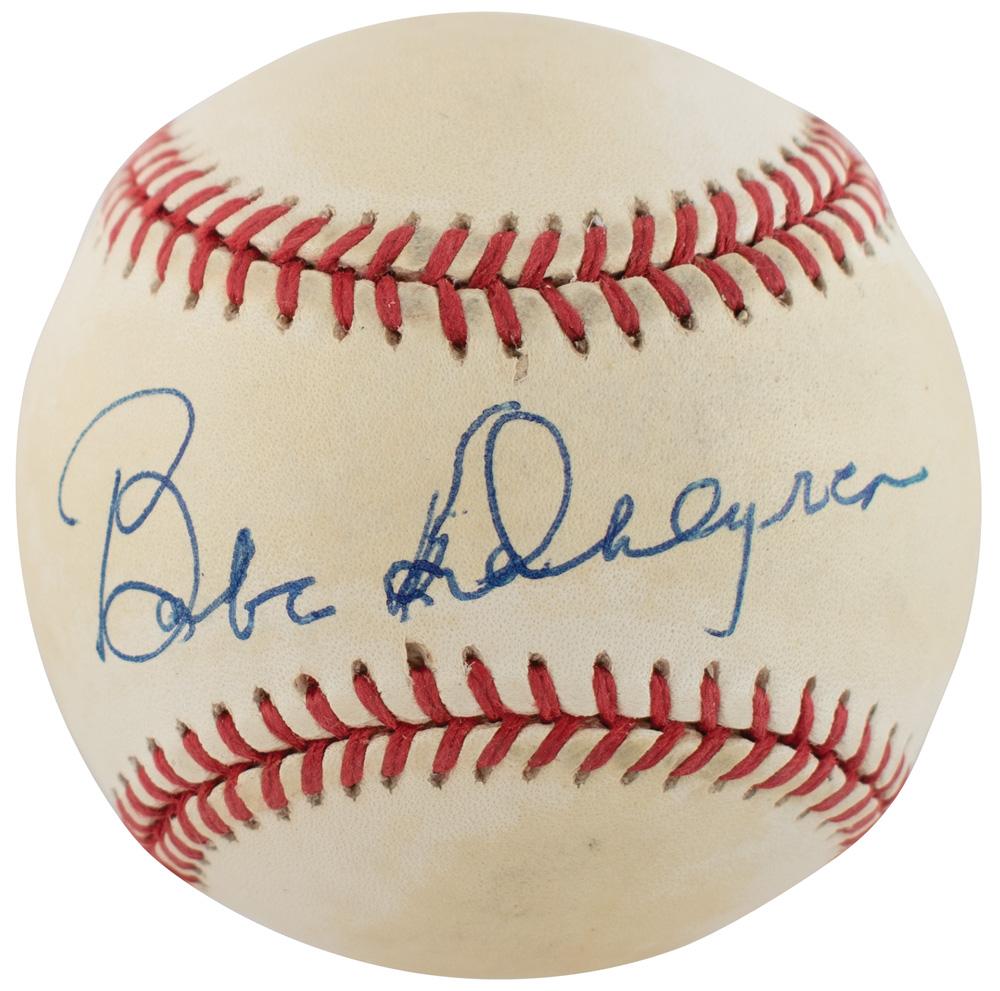

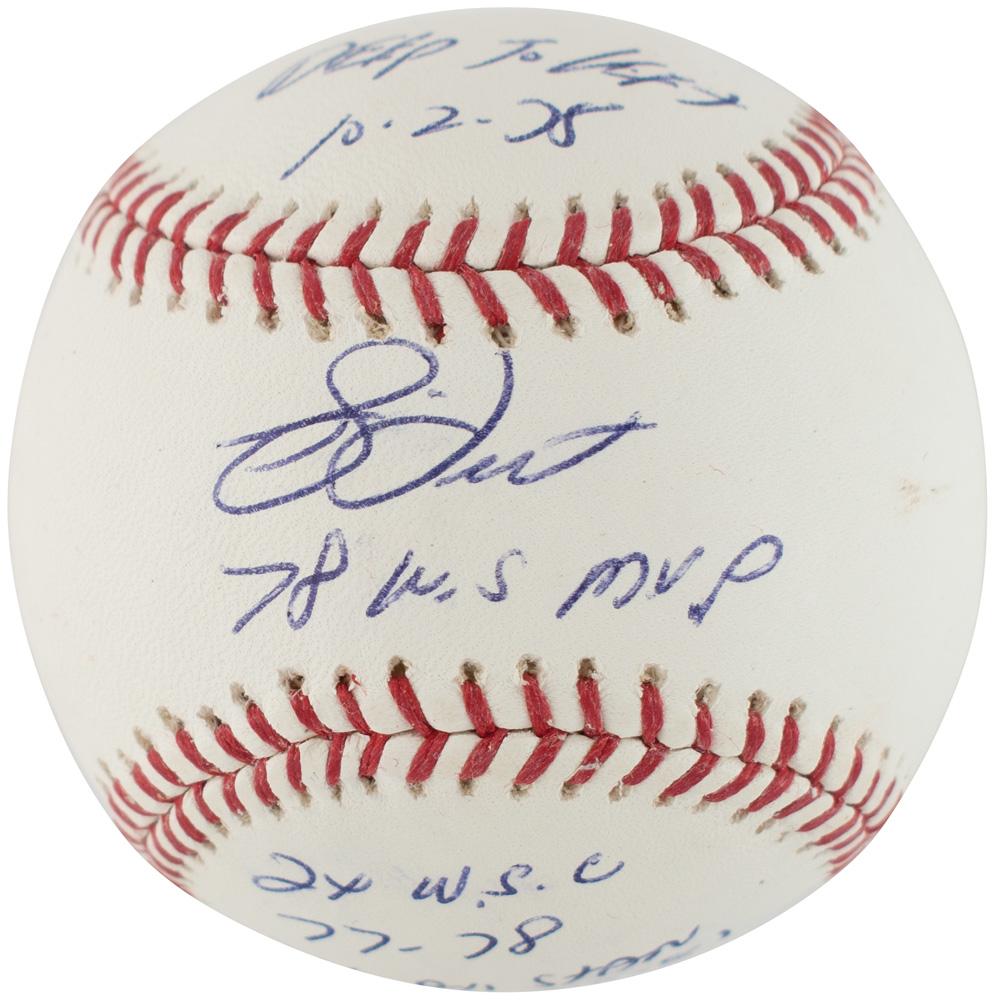
9283. NY Yankees: Abbott, Dent, Hernandez, and Howe (4) Signed Baseballs Starting Bid $200
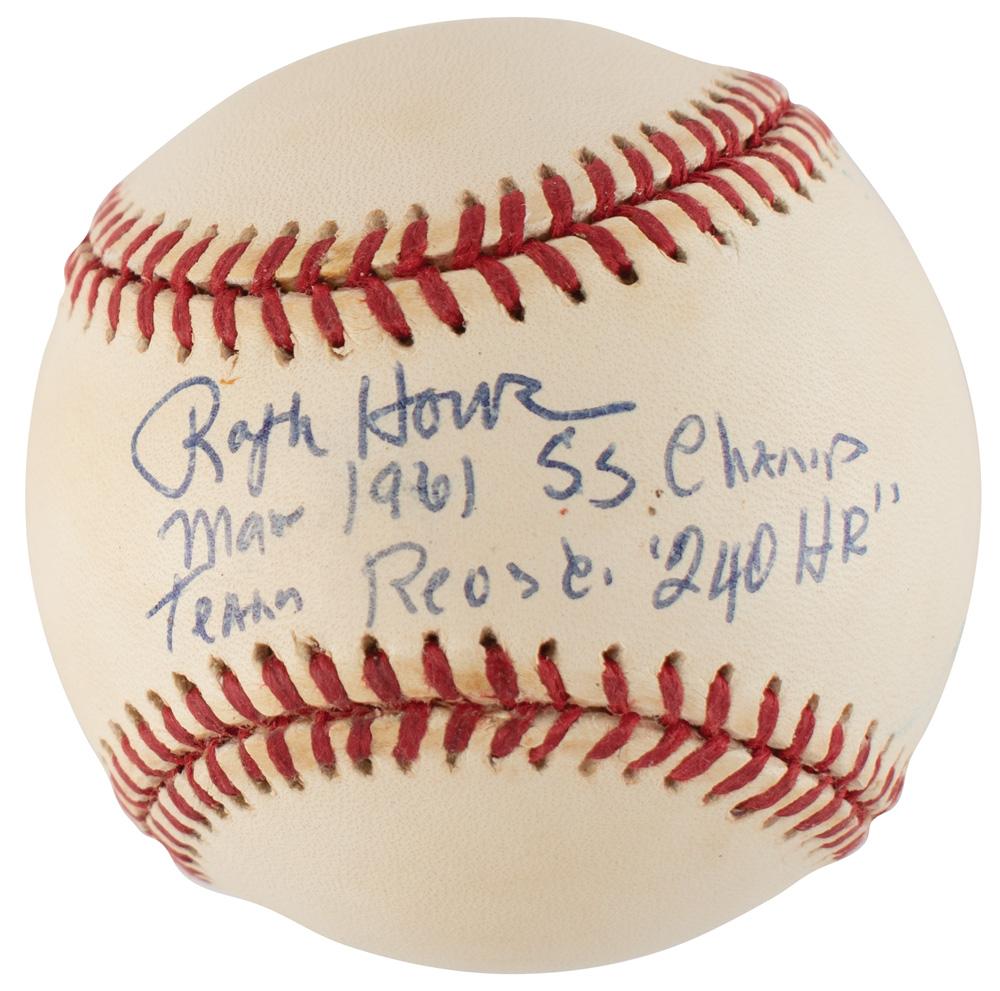

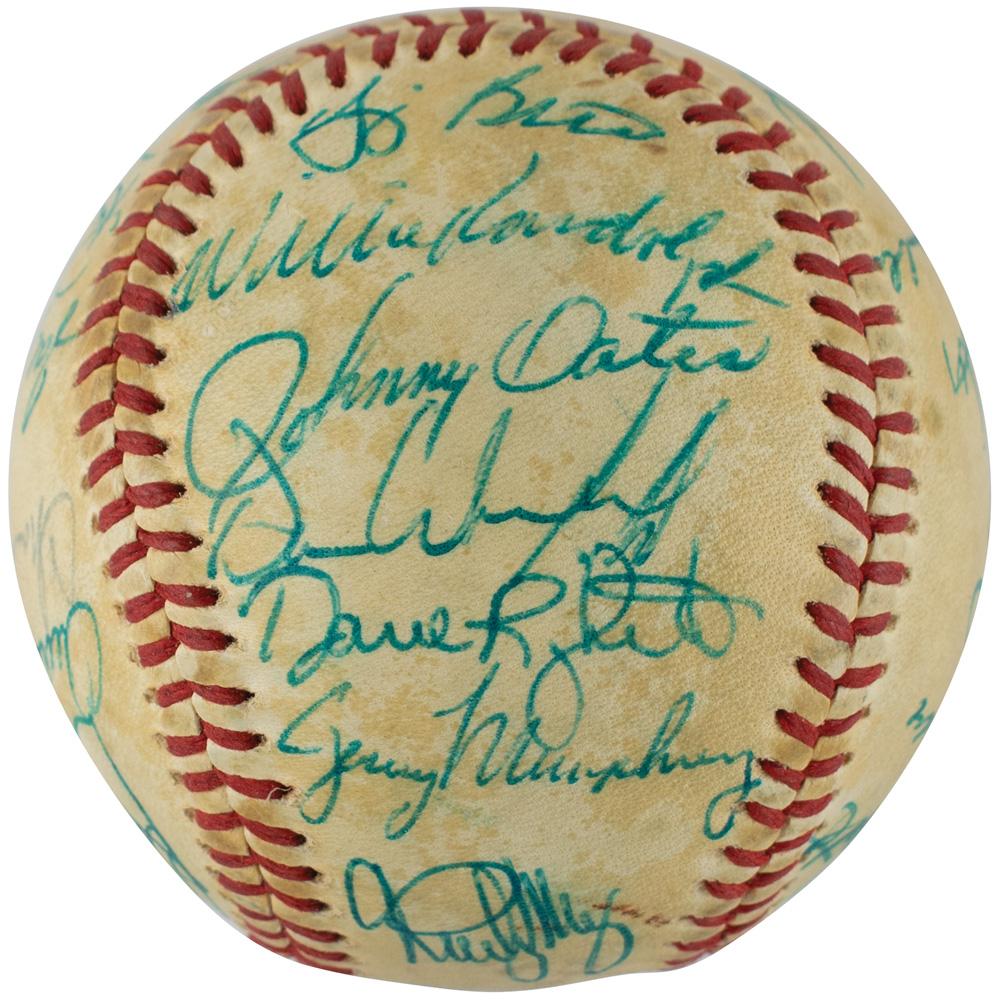
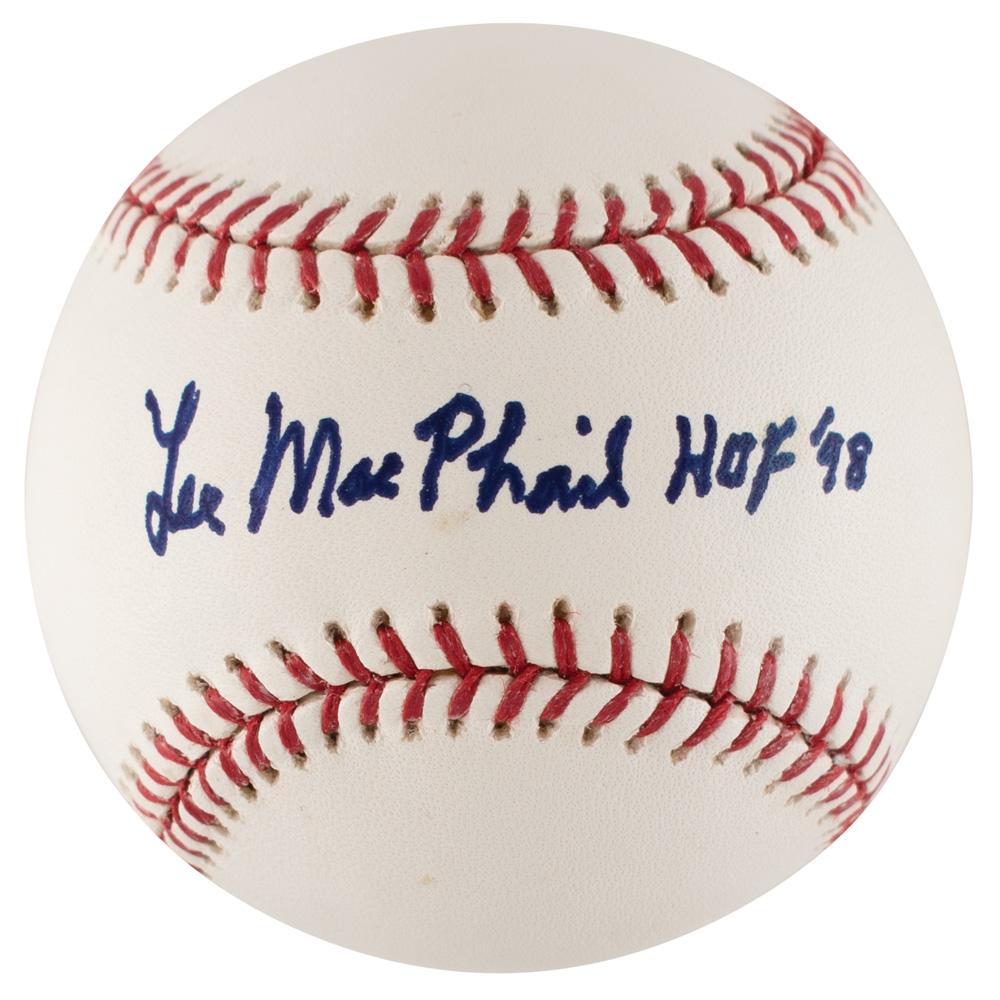
Starting Bid $200
9273. NY Yankees OldTimers Signed Baseball
Starting Bid $200
